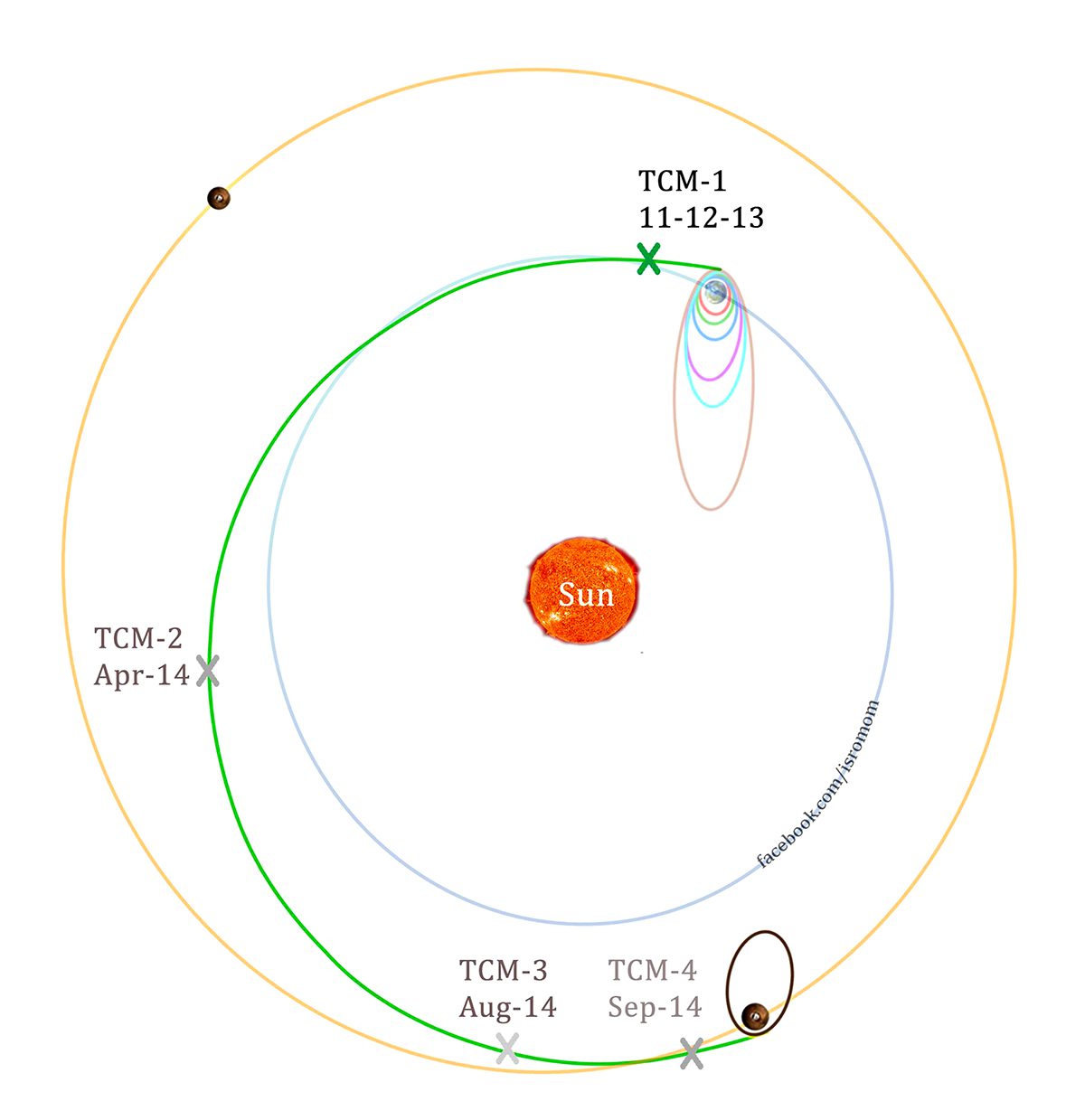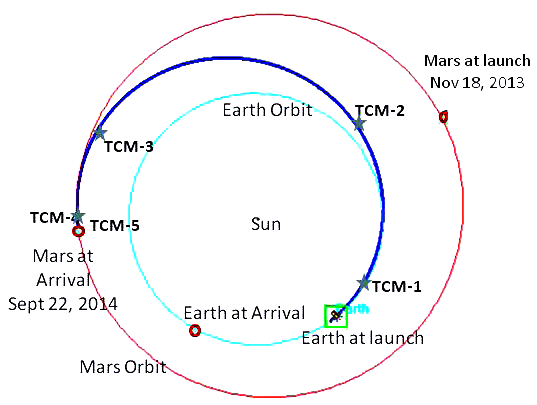Emily Lakdawalla • Feb 11, 2014
All's well in cruise phase for Mars-bound spacecraft MAVEN and Mars Orbiter Mission
The Indian Space Research Organisation issued a press release today stating that, 100 days after launch, Mars Orbiter Mission continues to operate normally and is on course for Mars. Ordinarily I don't post much about a mission during its quiet cruise phase -- no news is good news! -- but each day the Mars Orbiter Mission operates, it makes history by traveling farther from Earth than any Indian spacecraft has successfully operated before. Here's the full text of their press release:
Mars Orbiter Spacecraft, India's first interplanetary probe, was launched by PSLV-C25 at 1438 hours on November 5, 2013 from Satish Dhawan Space Centre, Sriharikota. In its voyage towards Mars, the mission successfully completes 100 days in space tomorrow (February 12, 2014).
Subsequent to six orbit raising manoeuvres around the Earth following the launch, the Trans Mars Injection(TMI) Manoeuvre on December 01, 2013 gave necessary thrust to the spacecraft to escape from Earth and to initiate the journey towards Mars, in a helio-centric Orbit. This journey, of course, is long wherein the spacecraft has to travel 680 million km out of which a travel of 190 million km is completed so far.
The First Trajectory Correction Manoeuvre (TCM) was conducted on December 11, 2013. The trajectory of the spacecraft, till today, is as expected. Three more TCM operations are planned around April 2014, August 2014 and September 2014.
The spacecraft health is normal. The spacecraft is continuously monitored by the ground station of ISRO Telemetry, Tracking and Command Network (ISTRAC), located at Byalalu, near Bangalore. Except for a 40 minute break in the Telemetry data received from the spacecraft to the ground station, data has been continuously available for all the 100 days.
The propulsion system of the spacecraft is configured for TCMs and the Mars Orbit Insertion (MOI) Operation. On February 6, 2014, all the five payloads on Mars Orbiter spacecraft were switched 'ON' to check their health.
The health parameters of all the payloads are normal. Presently, the spacecraft is at a radio distance of 16 million km causing a one way communication delay of approximately 55 seconds. After travelling the remaining distance of about 490 million km over the next 210 days, the spacecraft would be inserted into the Martian Orbit on September 24, 2014.

I can't provide an update on the status of one Mars-bound mission without checking in on the other one. MAVEN, too, is doing just fine on its own path to Mars. The MAVEN mission posts a blog every couple of weeks with updates about mission status. They checked out the Imaging Ultraviolet Spectrograph (IUVS) and Remote Sensing Package in December. Last month they finished checking out the Particles and Fields Package. Their most recent status report, posted on January 24, said:
As of January 22nd, 448 uplinks have been sent to the spacecraft since launch. MAVEN is 16.8 million kilometers (10.4 million miles) from Earth and 156.7 million kilometers (97.4 million miles) from Mars. Our second Trajectory Correction Maneuver (TCM-2) will occur on February 26th and will fine tune our approach path to Mars. The team also plans to activate the Electra telecommunications relay package in February.

Let’s Go Beyond The Horizon
Every success in space exploration is the result of the community of space enthusiasts, like you, who believe it is important. You can help usher in the next great era of space exploration with your gift today.
Donate Today

 Explore Worlds
Explore Worlds Find Life
Find Life Defend Earth
Defend Earth

